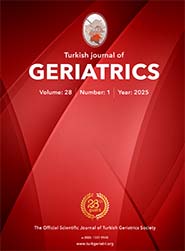Materials and Method: A retrospective analysis of 88 adult patients undergoing open-heart surgery was conducted. Preoperative and postoperative electrocardiographic data were compared, and frontal QRS-T angles were analyzed. Statistical analysis included paired t-tests and generalized linear modeling to identify factors influencing changes in the frontal QRS-T angle.
Results: After surgery, a significant increase in ventricular rate (p<0.001) was observed, accompanied by significant reductions in QRS duration (p=0.024) and QT interval (p=0.011). Higher preoperative left ventricular ejection fraction values were inversely associated with postoperative changes in the frontal QRS-T angle (odds ratio: 0.980; p=0.017).
Conclusion: Open-heart surgery leads to significant changes in ventricular conduction and repolarization, which are reflected in alterations in the frontal QRS-T angle. The preoperative frontal QRS-T angle emerged as a robust predictor of postoperative electrical remodeling dynamics. Higher preoperative left ventricular ejection fraction is associated with less pronounced postoperative changes in the frontal QRS-T angle, highlighting its importance in predicting postoperative electrical remodeling. Particularly in elderly patients, the frontal QRS-T angle may serve as a practical marker for perioperative risk stratification. The frontal QRS-T angle may be valuable for perioperative risk assessment, particularly in elderly patients. Further large-scale studies must validate these findings and explore the underlying mechanisms.
Keywords : Aged; Electrocardiography; Cardiopulmonary Bypass; Stroke Volume
